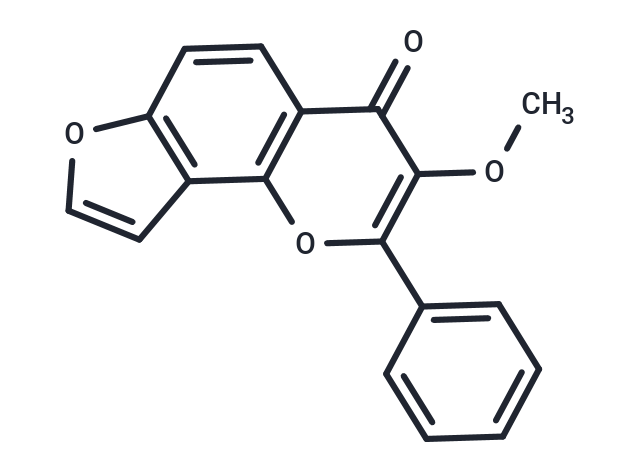Shopping Cart
- Remove All
 Your shopping cart is currently empty
Your shopping cart is currently empty

Karanjin is a flavonoid obtained from the seeds of the karanja tree.Karanjin induces GLUT4 translocation in skeletal muscle cells by increasing AMPK activity. Karanjin can induce cancer cell death through cell cycle arrest and enhance apoptosis.

| Pack Size | Price | Availability | Quantity |
|---|---|---|---|
| 1 mg | $40 | In Stock | |
| 5 mg | $93 | In Stock | |
| 10 mg | $156 | In Stock | |
| 25 mg | $288 | In Stock | |
| 50 mg | $428 | In Stock | |
| 100 mg | $619 | In Stock | |
| 200 mg | $877 | In Stock |
| Description | Karanjin is a flavonoid obtained from the seeds of the karanja tree.Karanjin induces GLUT4 translocation in skeletal muscle cells by increasing AMPK activity. Karanjin can induce cancer cell death through cell cycle arrest and enhance apoptosis. |
| In vitro | Karanjin is a furanoflavonol, insecticidal and acaricidal activities.?The present study was intended to evaluate the biochemical interactions of karanjin with bovine serum albumin (BSA) and study its toxicological effects on mammalian and bacterial cell lines.?Karanjin bound to BSA at a single site with a dissociation constant of 19.7 μM.?Evaluation of BSA-karanjin interactions at three different temperatures indicated the involvement of static mode of quenching.?Binding experiments in the presence of warfarin and computational docking analysis indicated that karanjin bound closer to the warfarin binding site located in the Subdomain IIA of BSA.?Using F?rster resonance energy transfer analysis the distance between TRP 213 of BSA and karanjin was found to be 20 ?.?Collective results from synchronous fluorescence spectra analysis, differential scanning calorimetry, and circular dichroism analysis indicated that binding of karanjin induced conformational changes in the secondary structure of BSA.?Karanjin exhibited low toxicity against human cervical cancer cells and normal mouse fibroblast L929 cells and modestly inhibited the growth of B. subtilis and E. coli cells[3]. |
| Molecular Weight | 292.29 |
| Formula | C18H12O4 |
| Cas No. | 521-88-0 |
| Smiles | O=C1C2=C(C3=C(C=C2)OC=C3)OC(=C1OC)C4=CC=CC=C4 |
| Relative Density. | 1.36g/cm3 |
| Storage | Powder: -20°C for 3 years | In solvent: -80°C for 1 year | Shipping with blue ice. | ||||||||||||||||||||
| Solubility Information | DMSO: 2.92 mg/mL (10 mM), Sonication is recommended. | ||||||||||||||||||||
Solution Preparation Table | |||||||||||||||||||||
DMSO
| |||||||||||||||||||||

Copyright © 2015-2024 TargetMol Chemicals Inc. All Rights Reserved.